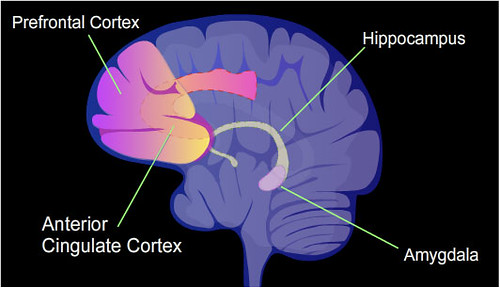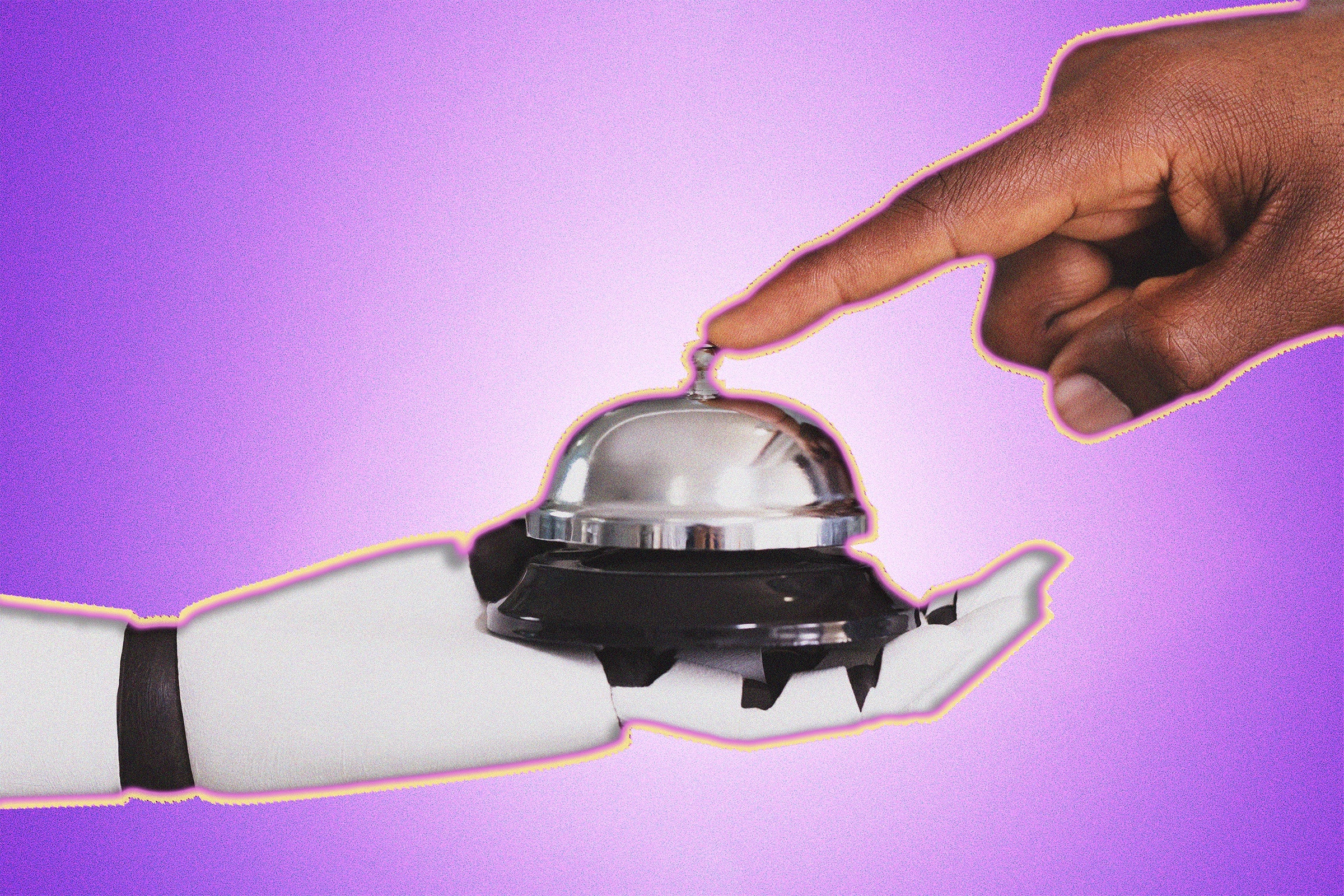AI research is fueled by the pursuit of ever-greater sophistication, which includes training systems to think and behave like humans.
The end goal? Who knows. The goal for now? To create autonomous, generalized AI agents capable of performing a wide range of tasks.
This paradigm is called artificial general intelligence (AGI) or superintelligence.
It’s challenging to pinpoint precisely what AGI entails because there’s virtually nil consensus on what ‘intelligence’ is, or indeed, when or how artificial systems might achieve it.
Some even believe AI in its current state can never truly obtain natural intelligence.
Professor Tony Prescott and Dr. Stuart Wilson from the University of Sheffield described generative language models, like ChatGPT, as inherently limited as they’re “disembodied.” Meta’s chief AI scientist, Yann LeCun, says even a toddler’s intelligence is fathomlessly more intelligent than today’s best AI systems.
Animals possess an innate ability to navigate complex, unpredictable environments, learn from limited experiences, and make decisions based on incomplete information – capabilities that remain primarily off-limits for AI systems.
While ‘embodied’ behaviors may not be necessary to achieve AGI, there is some consensus that complex AI systems moving from the lab into the real world will need to adopt behaviors similar to those observed in natural organisms.
So, where do we start? One approach is to dissect complex cognition into its basic components and then reverse-engineer AI systems to mimic them.
A previous DailyAI essay investigated curiosity and its ability to guide organisms toward new experiences and objectives, fueling the collective evolution of the natural world.
But there is another emotion – another essential component of our existence – from which AGI could benefit. And that’s fear.
How AI can learn from biological fear
Far from being a weakness or a flaw, fear is one of evolution’s most potent tools for keeping organisms safe in the face of danger.
The amygdala is the central structure that governs fear in vertebrates, mammals, reptiles, amphibians, fish, and birds. In humans, it’s a small, almond-shaped structure nestled deep within the brain’s temporal lobes.
The amygdala primarily drives the fear response in vertebrates.
Often dubbed the “fear center,” the amygdala serves as an early warning system, constantly scanning incoming sensory information for potential threats.
When a threat is detected – whether it’s the sudden lurch of a braking car ahead or a shifting shadow in the darkness – the amygdala springs into action, triggering a cascade of physiological and behavioral changes optimized for rapid defensive response:
Heart rate and blood pressure surge, priming the body for “fight or flight”
Attention narrows and sharpens, honing in on the source of danger
Reflexes quicken, readying muscles for split-second evasive action
Cognitive processing shifts to a rapid, intuitive, “better safe than sorry” mode
This fear response is not a simple reflex. It’s a highly adaptive, context-sensitive suite of changes that flexibly tailor behavior to the nature and severity of the threat at hand.
Moreover, the amygdala doesn’t operate in isolation. It’s densely interconnected with other key brain regions involved in perception, memory, reasoning, and action.
Deconstructing fear: insights from the fruit fly
We’re still far from developing artificial systems that fully replicate the integrated, specialized neural regions found in biological brains. But that doesn’t mean we can’t model those mechanisms in other ways.
So, let’s zoom out and look at how invertebrates – small insects, for example – detect and process fear. While they don’t have a structure directly analogous to the amygdala, that doesn’t necessarily mean they lack circuitry that achieves a similar objective.
For example, recent studies into the fear responses of Drosophila melanogaster, the common fruit fly, yielded intriguing insights into the fundamental building blocks of primitive emotion.
In an experiment conducted at Caltech in 2015, researchers led by David Anderson exposed flies to an overhead shadow designed to mimic an approaching predator.
Using high-speed cameras and machine vision algorithms, they meticulously analyzed the flies’ behavior, looking for signs of what Anderson calls “emotion primitives” – the basic components of an emotional state.
Remarkably, the flies exhibited a suite of behaviors that closely paralleled the fear responses seen in mammals.
When the shadow appeared, the flies froze in place, and their wings cocked at an angle to prepare for a quick escape.
As the threat persisted, some flies took flight, darting away from the shadow at high speed. Others remained frozen for an extended period, suggesting a state of heightened arousal and vigilance.
Crucially, these responses were not mere reflexes triggered automatically by the visual stimulus. Instead, they appeared to reflect an enduring internal state, a kind of “fly fear” that persisted even after the threat had passed.
This was evident in the fact that the flies’ heightened defensive behaviors could be elicited by a different stimulus (a puff of air) even minutes after the initial shadow exposure.
Moreover, the intensity and duration of the fear response scaled with the level of threat. Flies exposed to multiple shadow presentations showed progressively stronger and longer-lasting defensive behaviors, indicating a kind of “fear learning” that allowed them to calibrate their response based on the severity and frequency of the danger.
As Anderson and his team argue, these findings suggest that the building blocks of emotional states – persistence, scalability, and generalization – are present even in the simplest creatures.
If we can decode how simpler organisms like fruit flies process and respond to threats, we can potentially extract the core principles of adaptive, self-preserving behavior.
These insights could then be applied to develop AI systems that are more robust, safer, and more attuned to real-world risks and challenges.
How fear could interact with AI
So, why does imparting processing and response to fear matter in the context of AI anyway?
In biological systems, fear serves as a crucial mechanism for rapid threat detection and response. By mimicking this system in AI, we can potentially create more robust and adaptable artificial systems.
This ability is pertinent to autonomous systems. Case in point: despite AI intelligence exploding in recent years, driverless cars still tend to fall short in terms of safety and reliability.
Regulatory investigations are currently active in the US following numerous fatal incidents involving self-driving cars, including Tesla models with Autopilot and Full Self-Driving features.
Despite Elon Musk’s pleadings, real-world incidents and ongoing investigations by the Department of Justice and National Highway Traffic Safety Administration suggest that these technologies aren’t as reliable as claimed.
Speaking to the Guardian in 2022, Matthew Avery, director of research at Thatcham Research, explained why this is the case:
“Number one is that this stuff is harder than manufacturers realized,” Avery states.
The majority of autonomous driving functions – about 80% – involve relatively straightforward tasks like lane following and basic obstacle avoidance.
The next actions, however, are much more challenging. “The last 10% is really difficult,” Avery emphasizes, like “when you’ve got, you know, a cow standing in the middle of the road that doesn’t want to move.”
Sure, cows aren’t fear-inspiring in their own right. But any concentrating driver would probably fancy their chances at stopping if they’re hurtling towards one at speed.
An AI system relies on its training and technology to see the cow and make the appropriate decision. That process isn’t always quick or reliable enough, hence the high risk of collisions and accidents, especially when the system encounters something it’s not trained to understand.
Imbuing AI systems with fear might provide an alternative, quicker, and more efficient means of reaching that decision.
Fear, in biological systems, triggers rapid, instinctive responses that don’t require complex processing. For instance, a human driver might instinctively brake at the mere suggestion of an obstacle, even before fully processing what it is.
This near-instantaneous reaction, driven by a fear response, could be the difference between a near-miss and a collision.
Moreover, fear-based responses in nature are highly adaptable and generalize well to novel situations.
An AI system with a fear-like mechanism might be better equipped to handle unforeseen scenarios. It might react cautiously to any potential threat rather than being limited to only the specific situations in which it was trained.
Infusing AI with fear circuitry
One intriguing study examined whether the concept of “fear” can improve the safety of driverless cars and other autonomous systems.
“Fear-Neuro-Inspired Reinforcement Learning for Safe Autonomous Driving,” led by Chen Lv at Nanyang Technological University, Singapore, developed a fear-neuro-inspired reinforcement learning (FNI-RL) framework for improving the performance of driverless cars.
By building AI systems that can recognize and respond to the subtle cues and patterns that trigger human defensive driving – what they term “fear neurons” – we may be able to create self-driving cars that navigate the road with the intuitive caution and risk sensitivity they need.
The FNI-RL framework translates key principles of the brain’s fear circuitry into a computational model of threat-sensitive driving, allowing an autonomous vehicle to learn and deploy adaptive defensive strategies in real time.
It involves three key components modeled after core elements of the neural fear response:
A “fear model” that learns to recognize and assess driving situations that signal heightened collision risk, playing a role analogous to the threat-detection functions of the amygdala.
An “adversarial imagination” module that mentally simulates dangerous scenarios, allowing the system to safely “practice” defensive maneuvers without real-world consequences – a form of risk-free learning reminiscent of the mental rehearsal capacities of human drivers.
A “fear-constrained” decision-making engine that weighs potential actions not just by their immediately expected rewards (e.g. progress towards a destination), but also by their assessed level of risk as gauged by the fear model and adversarial imagination components. This mirrors the amygdala’s role in flexibly guiding behavior based on an ongoing calculus of threat and safety.
Schematic of the FNI-RL framework: (a) Brain-inspired RL systems. (b) Adversarial imagination module simulating amygdala function. (c) Fear-constrained actor-critic mechanism. (d) Agent-environment interaction loop. Source: ResearchGate.
To put this system through its paces, the researchers tested it in a battery of high-fidelity driving simulations featuring challenging, safety-critical scenarios:
Sudden cut-ins and swerves by aggressive drivers
Erratic pedestrians jaywalking into traffic
Sharp turns and blind corners with limited visibility
Slick roads and poor weather conditions
Across these tests, the FNI-RL-equipped vehicles demonstrated remarkable safety performance, consistently outperforming both human drivers and traditional reinforcement learning approaches, avoiding collisions and defensive driving skills.
In one striking example, the FNI-RL system successfully navigated a sudden, high-speed traffic merger with a 90% success rate, compared to just 60% for a state-of-the-art RL baseline.
It even achieved safety gains without sacrificing driving performance or passenger comfort.
In other tests, the researchers probed the FNI-RL system’s ability to learn and generalize defensive strategies across driving environments.
In a simulation of a busy city intersection, the AI learned in just a few trials to recognize the telltale signs of a reckless driver – sudden lane changes, aggressive acceleration – and pre-emptively adjust its own behavior to give a wider berth.
Remarkably, the system was then able to transfer this learned wariness to a novel highway driving scenario, automatically registering dangerous cut-in maneuvers and responding with evasive action.
This demonstrates the potential of neurally-inspired emotional intelligence to enhance the safety and robustness of autonomous driving systems.
By endowing vehicles with a “digital amygdala” tuned to the visceral cues of road risk, we may be able to create self-driving cars that can navigate the challenges of the open road with a fluid, proactive defensive awareness that augments their already formidable capacities.
Towards a science of emotionally-aware robotics
While recent AI advancements have relied on brute-force computational power, researchers are now drawing inspiration from human emotional responses to create smarter and more adaptive artificial systems.
This paradigm, named “bio-inspired AI,” extends beyond self-driving cars to fields like manufacturing, healthcare, and space exploration.
There are numerous exciting angles to explore. For example, robotic hands are being developed with “digital nociceptors” that mimic pain receptors, enabling swift reactions to potential damage.
In terms of hardware, IBM’s bio-inspired analog chips use “memristors” to store varying numerical values, reducing data transmission between memory and processor.
Similarly, researchers at the Indian Institute of Technology, Bombay, have designed a chip for Spiking Neural Networks (SNNs), which closely mimic biological neuron function.
Professor Udayan Ganguly reports this chip achieves “5,000 times lower energy per spike at a similar area and 10 times lower standby power” compared to conventional designs.
These advancements in neuromorphic computing bring us closer to what Ganguly describes as “an extremely low-power neurosynaptic core and real-time on-chip learning mechanism,” key elements for autonomous, biologically inspired neural networks.
Combining nature-inspired AI architectures and technology with modules based on natural emotional states such as fear or curiosity will thrust AI into an entirely new paradigm.
As researchers push those boundaries, we’re not just creating more efficient machines – we’re potentially birthing a new form of intelligence.
As this line of research evolves, autonomous machines might roam the world among us, reacting to unpredictable environmental cues with curiosity, fear, and other emotions considered distinctly human.





